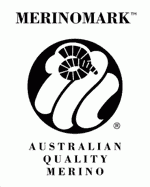Felting
Felting finish
Felting Finishing Wash is a blend of nonionic surfactant and anionic fibre
softener and lanolin designed to leave the felting with a soft handle and natural sheen. The blend of tea tree oil and lemon myrtle helps prevent house moth damage.

The oil from tea tree (Melaleuca alternifolia) is nature’s weapon against dust mite, a known cause of allergen for asthma sufferers and particularly in babies. Felting Finishing Wash contains a unique blend of melaleuca oils, including tea tree oil, which has been proven effective against dust miteª.
Felting Finishing Wash can be used as a general low sensitive laundry detergent suitable for bed linen and clothing.Felting Finishing Wash will be beneficial to chronic asthma sufferers where dust mite is a critical matter.
Tea tree oil, whilst being effective against house-dust mite, is also recognised as antifungal and antibacterial as well.
Felt
Felt is made by a process called wet felting, where the natural natural fibre is stimulated by friction and lubricated by moisture (usually soapy water), and the fibres move at a 90 degree
angle towards the friction source and then away again, in effect making little "tacking" stitches. Only 5% of the fibres are
active at any one moment, but the process is continual, and so different 'sets' of fibres become activated and then deactivated in the continual process.
This "wet" process utilizes the inherent nature of wool and other animal hairs, because the hairs have scales on them which are directional. The hairs also have kinks in them, and this combination of scales is what reacts to the stimulation of friction and causes the phenomenon of felting. It tends to work well with
woollen fibres as their scales, when aggravated, bond together to form a cloth.
Needle felting is a popular fibre arts craft conducted without the use of water. Special barbed felting needles that are used in industrial felting machines are used by the artist as a sculpting tool. Using a single needle or a small group of needles (2-5) in a hand held tool, these needles are used to sculpt the wool fibre. The barbs catch the scales on the fibre and push them through the layers of wool tangling them and binding them together;
much like the wet felting process.
Fine details can be achieved using this technique
and it is popular for 2D and 3D felted

Felting Guide
Remove any large solid matter by hand.
Wash the fibre with Fibre Scour, making sure there is sufficent water in a large shallow dish for the fibres to be gently paddled freely to avoid matting.
For natural coloured wool, if further cleaning is required, give it a second wash in Delicates Wash only to remove the dirt, not the natural oil in the wool.
For wool to be dyed wash the wool in Fibre Scour until completely clean.
When dry, card and comb it before beginning the felting process with soapy water using only a pure olive oil soap so it is gentle on the fibre and our hands.
When the felt has been rolled sufficiently to achieve the desired felting effect full it by plunging the felted piece into warm to hot water, squeeze out water excess and throw it down onto the table a few times, repeat this process the desired number of times for project then plunge it into cold water.
This shocks the fibres and they contract causing futher shrinking & fulling.
At this point, to avoid any futher felting and therefore continued shrinkage, the felting process needs to STOP.
Start to relax and restore the fibres by placing them into the Felting Finishing
Wash mixed at a ratio of 20ml to 10lt of warm water and gently move the felt around sufficiently to ensure that all the fibres are saturated, then remove, squeeze out excess water, blot dry in a towel and lay flat to dry.
Leave the Felting Finishing Wash in the felt for four reasons, it is good for the fibre, putting some of the nutrients like lanoline back in again
It will act as a deterrent to any little bugs wanting to make a meal of
the felt because of the Tea Tree oil & Lemon Myrtle


